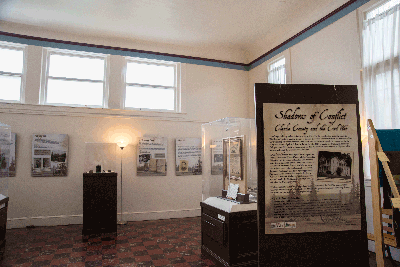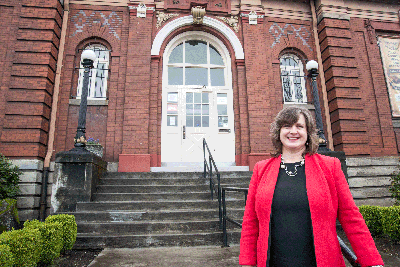Museums are often thought of as somewhat distant, reserved places full of eccentric masks and ancient tableware. But at the Clark County Historical Museum history is actively being made relevant to the community every day.
Recently, the museum received a federal Transportation Enhancement Grant and financial support from a BNSF to Foundation Grant to install a permanent interpretive exhibit in the Vancouver Depot. The exhibit will feature the Spokane, Portland & Seattle (SP&S) Railroad, portions of which are still operated by BNSF Railway.
“The interesting thing about the Depot, which is the (Vancouver) Amtrak station, is that [the Depot] is also a 1909 building. The Depot and the museum are the same age and they are both buildings owned and maintained by the City of Vancouver,” according to Tissot. The new display will be open in May.
The CCHM sees its role in the community as one of comprehensively preserving and sharing the history of Clark County and the Pacific Northwest. The Clark County Historic Society, established in 1917, operates the Museum and is dedicated to acquiring artifacts and publishing documents related to the local region. They also actively bring educational programs about the area’s history to the community.
 The broad based collection reflects the Historic Society’s commitment to telling the regions story through artifacts. The collection includes pieces dating from the year 1280 to contemporary times and includes Native American, archaeological and territorial materials. Their largest artifact in the collection is the museum building itself, which was built in 1909 with funds from industrialist Andrew Carnegie and has been known locally as Vancouver’s Carnegie Library. The Museum is host for a variety of events including lectures, teacher training opportunities and community workshops. The Historic Society volunteer efforts are supported with student internships.
The broad based collection reflects the Historic Society’s commitment to telling the regions story through artifacts. The collection includes pieces dating from the year 1280 to contemporary times and includes Native American, archaeological and territorial materials. Their largest artifact in the collection is the museum building itself, which was built in 1909 with funds from industrialist Andrew Carnegie and has been known locally as Vancouver’s Carnegie Library. The Museum is host for a variety of events including lectures, teacher training opportunities and community workshops. The Historic Society volunteer efforts are supported with student internships.
“It has always been my philosophy that the museum collection is an important tool to educate the public about their past,” Tissot explained.
Despite a rather limited budget, the museum manages to survive in the throes of tough economies through the generous support of donors and partnerships with the city and county governments. “We operate in partnership with the City of Vancouver, owner of the building and Clark County, which provides us with some funding and many services,” said Tissot. However, Tissot went on to say the Historic Society still raises 70% of their operating budget through donations from families, individuals, the sale of books and keepsakes in the Museum Store and offering various levels of membership in the Historic Society.
Another area of financial support is corporate sponsors and memberships. These sponsorships not only highlight a company as a community supporter but provide its clients and staff with exclusive services, such as private tours outside public hours and the opportunity to hold private receptions at the museum.
Besides the preservation of history, the museum is devoted to creating access to parts of its collection for the broadest possible audience both locally and around the world. In the partnership with Washington State University, they have digitized more than 15,000 images of historical documents and photos to add to their online collection. Online visitors to the digital archive now total 70,000.
“We want to make the history accessible to people through the electronic resources and at the museum, but also make it relevant,” Tissot said.
Mineta Suzuki is an international student from Tokyo currently enrolled in his first year of undergraduate studies at Grinnell College in Iowa. He job shadowed Vancouver Business Journal freelancer Courtney Sherwood in March as part of the college’s “externship” program, which offers students an opportunity to gain hands-on experience in professional fields that interest them.
{jathumbnail off}




